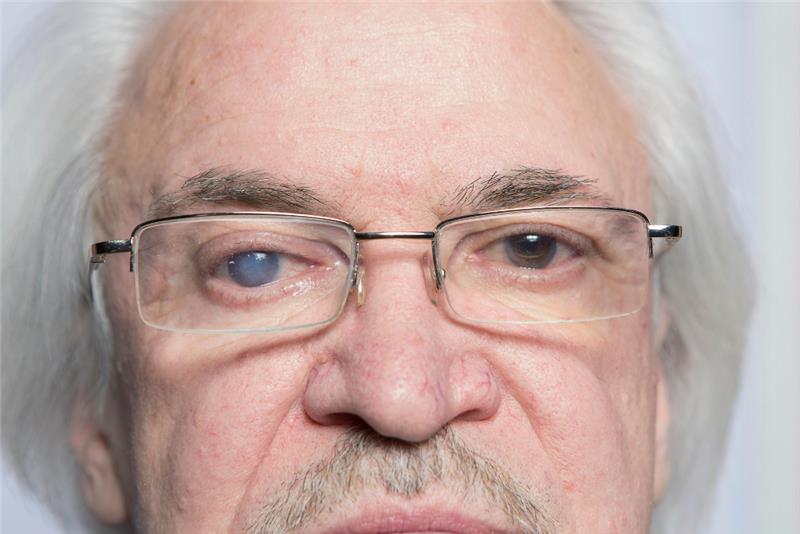These subtle changes could be early signs of cataracts, a condition that affects millions worldwide. In fact, cataracts are one of the most common causes of vision loss, particularly as we age, impacting more than half of individuals over the age of 75.
Understanding what cataracts are, how they alter your vision, and when to seek appropriate care is important for maintaining your precious sight.
What Are Cataracts?
At its most basic, a cataract is the clouding of the eye’s natural lens. This lens, located behind the iris and pupil, works much like the lens of a camera, focusing light onto the retina at the back of your eye. This allows you to see clearly.
However, when proteins in the lens break down and clump together, they create cloudy areas, hindering the passage of light and leading to blurry vision and cataracts.
Several factors can contribute to the development of cataracts:
- Aging: This is the most frequent cause as the lens naturally changes over time.
- Eye injuries: Trauma to the eye can disrupt the lens fibers.
- Prolonged UV exposure: Years of unprotected exposure to sunlight can accelerate cataract formation.
- Certain medical conditions: Diabetes, for instance, increases the risk of developing cataracts.
- Long-term use of certain medications: Steroids, when used for extended periods, have been linked to cataract development.
As the lens loses its transparency, the sharp image that was once focused on your retina becomes hazy and distorted.
How Cataracts Affect Vision
The onset of cataracts is often gradual, meaning you might not notice significant changes in your vision at first. However, as the clouding progresses, you may experience a range of visual disturbances, including:
- Blurry or cloudy vision: This is one of the most common and noticeable cataract symptoms and causes. Your vision may appear fuzzy or as if you’re looking through a film.
- Faded colors: Colors may seem less bright and vibrant than they used to.
- Increased glare or halos around lights, especially at night: Headlights, streetlights, and even sunlight can become bothersome, with bright circles or streaks appearing around them. This can make night driving particularly challenging.
- Difficulty with night driving: The increased glare and reduced contrast sensitivity associated with cataracts can make it harder to see clearly in low-light conditions.
- Double vision in one eye: In some cases, cataracts can cause you to see two images of a single object when looking with the affected eye.
- Frequent changes in prescription glasses: You might find yourself needing new glasses or contact lenses more often as your vision continues to change due to the developing cataract.
It’s important to understand that cataracts are progressive. Without treatment, these symptoms will gradually worsen, significantly impacting your ability to perform everyday tasks.
Types of Cataracts
Cataracts can develop in different parts of the lens, leading to variations in symptoms and progression:
- Nuclear Cataracts: These form in the central part of the lens (the nucleus) and are typically associated with aging. They can initially cause a temporary improvement in near vision (“second sight”) but eventually lead to significant blurring.
- Cortical Cataracts: These begin in the outer layer (cortex) of the lens and appear as whitish, wedge-shaped opacities that extend from the periphery towards the center. They often cause problems with glare and contrast.
- Posterior Subcapsular Cataracts: These develop at the back surface of the lens. They often progress more quickly than other types and can significantly affect reading vision and cause glare, even in their early stages.
- Congenital Cataracts: These are present at birth or develop during childhood. They can be caused by genetic factors, infections during pregnancy, or other developmental issues.
When to Seek Treatment
In the early stages, cataracts may not significantly impair your vision, and non-surgical management might be sufficient. However, it’s necessary to be aware of the signs that indicate it’s time to seek professional eye care.
You should consider consulting an eye specialist for blurry vision if you experience:
- Vision changes that interfere with your daily activities, such as reading, driving, cooking, or watching television.
- Trouble seeing clearly in low-light conditions or at night.
- Increased sensitivity to glare from lights.
- Difficulty recognizing faces.
Regular eye exams are paramount for the early detection of cataracts and other eye conditions. A general eye doctor in Los Angeles, Newport Beach, Beverly Hills, or Glendale can perform initial screenings and refer you to a specialist if necessary.
Treatment Options for Cataracts
For early cataracts that aren’t significantly impacting vision, your eye doctor may recommend non-surgical strategies such as:
- Stronger glasses or magnifying lenses: These can help to improve vision in the early stages.
- Brighter lighting at home: Ensuring adequate illumination can make it easier to see.
- Anti-glare sunglasses: These can reduce discomfort from bright lights.
However, the most effective treatment option for cataracts is cataract surgery. This involves the removal of the clouded natural lens and its replacement with a clear artificial lens, known as an intraocular lens (IOL).
Cataract surgery is a highly successful and safe outpatient procedure, typically taking less than an hour. There are various types of IOLs available, including:
- Standard (monofocal) IOLs: These provide clear vision at one distance (near, intermediate, or far), and most people will still need glasses for other distances.
- Multifocal IOLs: These lenses have multiple zones that allow for clear vision at various distances, potentially reducing or eliminating the need for glasses.
- Toric IOLs: These are designed to correct astigmatism, a common refractive error that causes blurry or distorted vision at all distances.
If you’re in the Los Angeles area and wondering, “Do I need cataract surgery?”consulting with the best ophthalmologist for cataracts is the first step.
They can assess the severity of your cataracts and discuss the most suitable cataract treatment options for your individual needs and lifestyle.
Finding the best cataract surgeon in Los Angeles or nearby locations like Newport Beach, Beverly Hills, or Glendale can significantly contribute to a positive surgical outcome.
What to Expect After Cataract Surgery
Following cataract surgery, you can typically return home on the same day. You may experience mild discomfort, itching, or a gritty sensation in your eye for a few days, which can usually be managed with prescribed or over-the-counter medications.
Vision improvement is often noticeable within days after the surgery. However, full recovery and stabilization of vision can take 4 to 6 weeks.
It’s important to follow your surgeon’s post-operative instructions carefully, which may include using eye drops to prevent infection and reduce inflammation, avoiding strenuous activities, and wearing an eye shield, especially at night.
Conclusion
Cataracts are a common yet treatable cause of vision loss that can significantly impact your quality of life.
Recognizing the cataract symptoms and causes, understanding how blurry vision and cataracts develop, and knowing when to seek treatment are vital steps in preserving your sight.
Whether you’re in Los Angeles, Newport Beach, Beverly Hills, or Glendale, consulting with a qualified eye care professional at Soroudi Advanced LASIK & Eye Centers—a general eye doctor and the best ophthalmologist for cataracts—is important for early detection and timely intervention.



